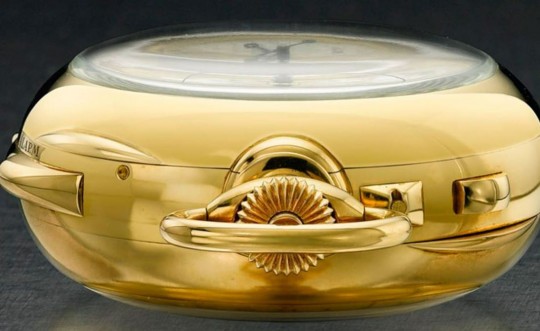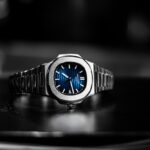
The Patek Philippe Henry Graves Supercomplication is not only the world’s most expensive timepiece, but also the most important watch ever created. Until 1989, when another Patek Philippe watch (Caliber 89) set a new record for the most complications in a single watch that was not designed with help from a computer, it also held the title of the most complicated timepiece in the world. Considering it had attained said title with its delivery in 1933, it had a very good run.
The Supercomplication, named after its owner, millionaire banker and one of the most important timepiece collectors Henry Graves Jr., was designed on commission. Its history is almost as fascinating as the watch itself, and it helped it climb to the top of the list of expensive timepieces, when it sold at auction, in 2014, for a whopping $24 million. The current owner of the Supercomplication is unknown, and the watch hasn’t been seen since.
In the roaring ‘20s in America, two millionaires were engaged in a gentleman’s contest to determine who could make Swiss luxury watchmaker Patek Philippe build the most complex watch. Those gentlemen were James Ward Packard and Henry Graves Jr., and the latter was about to win the competition. In 1925, he had commissioned the watchmaker to build him what would become the Supercomplication, a term Patek Philippe himself coined in reference to the pocket watch that came with no less than 24 complications.

Ward never got to see the watch, since he passed away in 1928. Supercomplication would take three years to research and another four years to design and assemble, which should hardly come as a surprise considering its many complications and the fact that all calculations were done by the watchmaker. This timepiece is the most illustrious example of the art of horology, such as it was at its peak: unnecessarily complicated, impractically beautiful, and a work of art.
Encased in gold, the Supercomplication is massive. With a diameter of 74mm (2.9 in), it’s 36 mm (1.4 in) thick and tips the scales at 536 grams (18.9 oz). It fits in the palm of a man’s hand, but he can’t close the fist around it. It has two faces, each with its distinct features, and it’s personalized for Graves, down to the complication that shows a celestial chart of the night sky over New York’s Central Park, as seen from Graves’ home on Fifth Avenue. Having your name etched on a watch is so… mundane – though this one has that as well.

Comprising 920 individual parts, the Supercomplication also has a perpetual calendar, phases of the moon, a chronograph that can time two simultaneous events, a Westminster chime on the minute repeater (like London’s Big Ben, it plays Handel’s aria from the Messiah, “I know that my redeemer liveth.”), grande and petite sonneries, equation of time, dual power reserves, and displays indications for the time of sunset and sunrise, also calibrated in reference to Graves’ NYC home.
Graves paid $15,000 for the timepiece in 1933, which is $343,512 adjusted for inflation. Upon his death, the watch remained in the family for a few more years, before being listed at auction for the first time in 1999, when it set the record for the most expensive timepiece in the world, selling for $11 million. The buyer turned out to be Sheikh Saud Bin Mohammed Bin Ali Al-Thani of Qatar, who outbid the Patek Philippe Museum by $1 million to get his hands on it. He allowed the watch to remain on display at the Museum for several years into the ownership, though.

In 2012, a report came out to say that the Sheikh was broke and in desperate need of liquidities. In order to pay an outstanding debt of over $83 million, he commissioned the sale of several art pieces, including the Supercomplication. The watch sold for $24 million, breaking its own record and setting a new, seemingly impossible-to-top standard for every other collectible of the kind.
The value of the Supercomplication goes beyond its high estimate on the collector’s market, to its merits as a piece of horological art. Widely considered the holy grail of watches, this gold pocket watch appeals to the fantasy of the unique and the unattainable, under the guise of an excruciatingly perfect horological work. It is the unicorn of timepieces, with the only difference being that one such unicorn exists.






